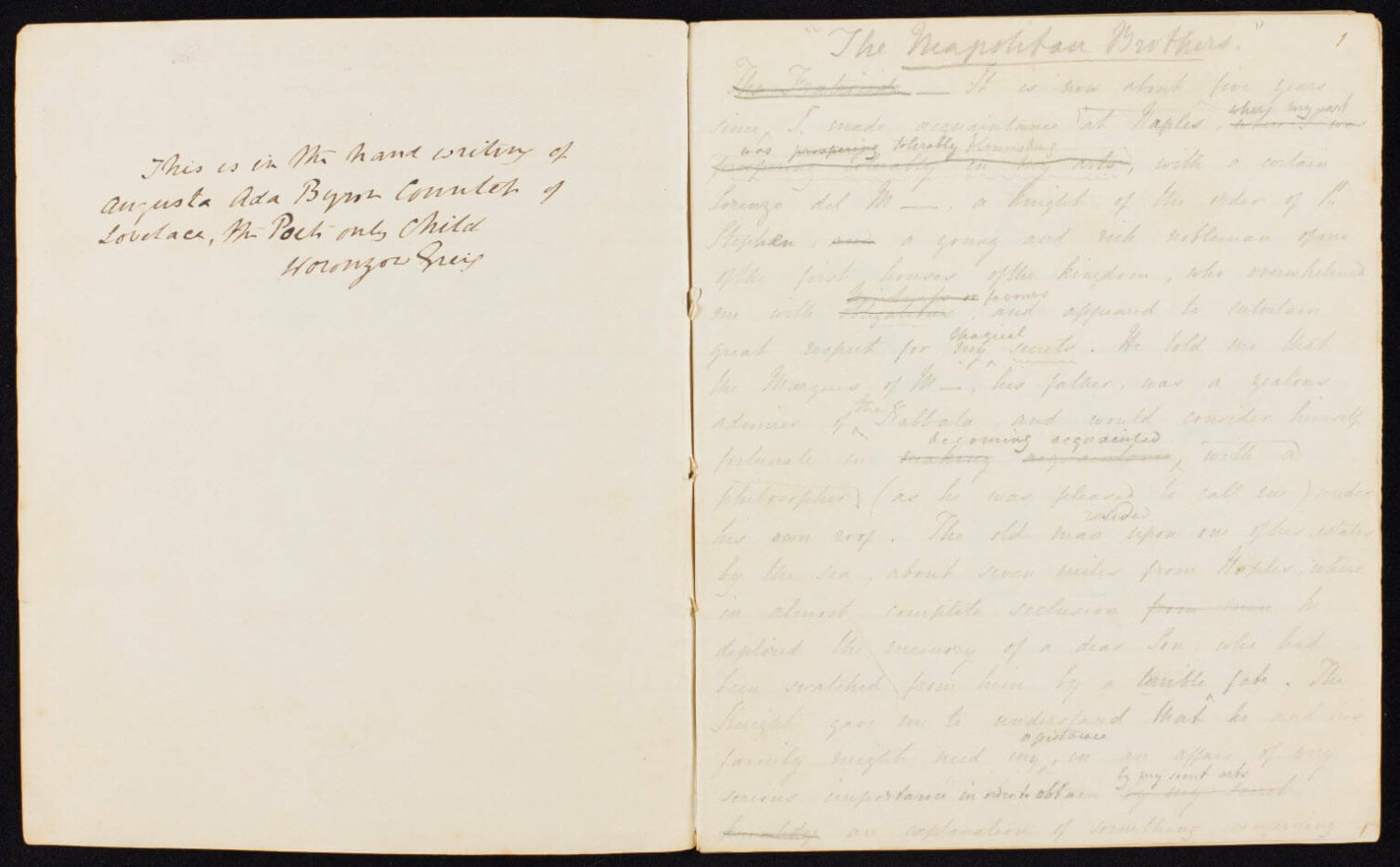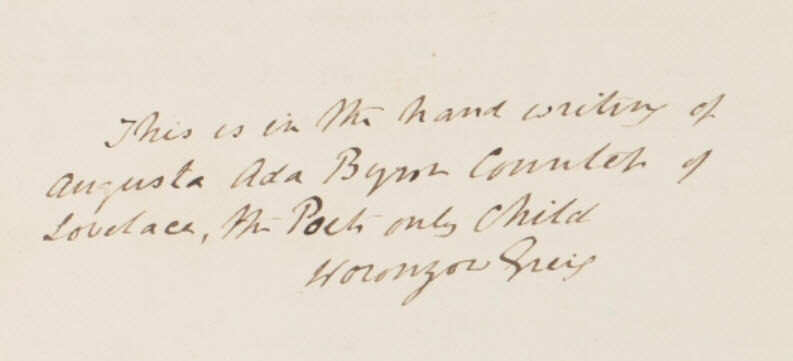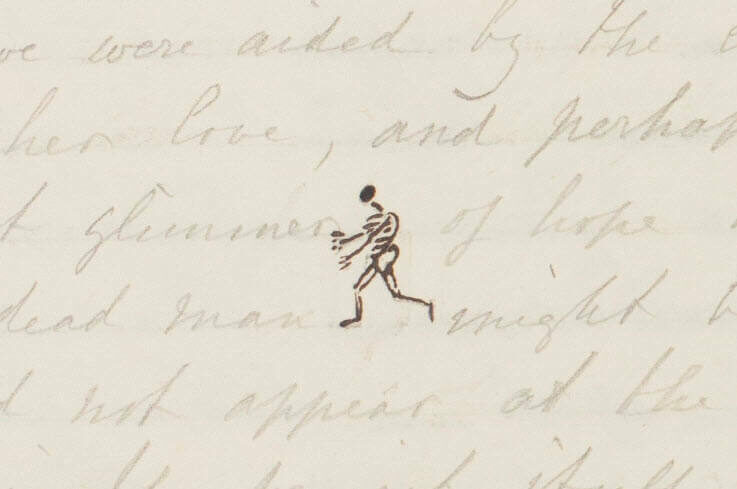Like father, like daughter? A gothic short story by Ada Lovelace
While most of us will be fortunate to earn one genuine ‘claim to fame’ in our lifetime, Augusta Ada King, Countess of Lovelace (10 December 1815 – 27 November 1852) has two. Best known today for her contributions to the fields of mathematics and computer science, she also happened to be the daughter of a certain George Gordon Byron, the most famous poet of the Romantic era.
Today being the anniversary of her death, I wanted to highlight a unique document: a work of fiction, not by Byron, but by his daughter.
AM’s recently published resource, Nineteenth Century Literary Society: The John Murray Publishing Archive, includes the Byron Papers, which comprise the largest surviving collection of Lord Byron’s published works, private letters and documents associated with his family. One of the more unusual items in this collection is a commonplace book belonging to a teenage Ada Lovelace.
Written in Lovelace’s hand, the book contains a short story entitled The Neapolitan Brothers: a gothic tale replete with ghosts, skeletons and – in what seems to be a nod to her father’s Eastern Tales – a corsair boat. Incredibly, this document remained in obscurity until uncovered by an archivist at the National Library of Scotland. Published this year by the Bodleian Library with an introduction by Miranda Seymour, The Neapolitan Brothers is the only complete example of Lovelace’s fiction writing known to survive.

Image © National Library of Scotland. Further reproduction is prohibited without permission.
The discovery of a work of fiction by Lovelace seems at first an exciting prospect – could it be that the daughter of Byron, known only for her work in analytical sciences, was actually a literary luminary in her own right? In reality, as Seymour recently wrote in the Times Literary Supplement, a closer reading of The Neapolitan Brothers reveals it to be a translation of part of The Ghost-Seer, an eighteenth-century gothic novel written by German author, Friedrich Schiller.
With its Venetian setting and plot details including a dark religious conspiracy and necromancy, the novel proved popular in England, where Gothic fiction had been gaining readers. Unusually for a girl of her station, Lovelace had been learning German, though she was – by her own admission – not a skilled student.

Image © National Library of Scotland. Further reproduction is prohibited without permission.
Byron’s influence on his daughter was limited: he died when Ada was only eight, and her mother had expressly forbidden her from reading his poetry until she was a teenager. Nevertheless, it appears that her choice of The Ghost-Seer as the basis for her own work may be linked to the most celebrated Gothic novel of the day: Mary Shelley’s Frankenstein, famously composed on a rainy day at Byron’s Swiss villa.
As Seymour writes, part of The Ghost-Seer was included with an edition of Frankenstein published in 1831 – around the same date as the commonplace book. In her introduction to this edition, Shelley speaks of having been inspired by nameless ‘German ghost stories’.

Image © National Library of Scotland. Further reproduction is prohibited without permission.
While Lovelace never followed in her father’s footsteps as a writer, she is celebrated as a pioneer in her own field. Nevertheless, as this document – together with the charming little skeleton doodled in the margins – demonstrates, there was more than a little of Lord Byron in his brilliant daughter.
About the collection
Nineteenth Century Literary Society: The John Murray Publishing Archive is out now.
Recent posts

The blog highlights American Committee on Africa, module II's rich documentation of anti-apartheid activism, focusing on the National Peace Accord, global solidarity, and student-led divestment campaigns. It explores the pivotal role of universities, protests, and public education in pressuring institutions to divest from apartheid, shaping global attitudes toward social justice and reform.

This blog examines how primary sources can be used to trace the impact of young voices on society, particularly during pivotal voting reforms in the UK and the US. Explore materials that reveal insights into youth activism, intergenerational gaps, and societal perceptions, highlighting their interdisciplinary value for studying youth culture, activism, and girlhood across history.
